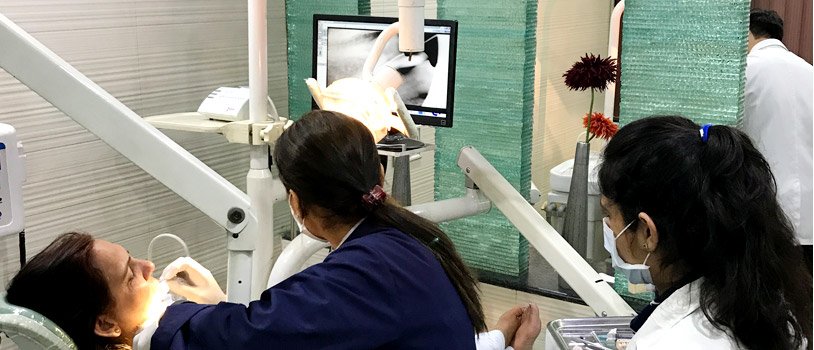Advancements in any technology offer better solutions for traditional problems. Dentistry is no exception. The dental field is constantly evolving to best suit the needs of anticipating customers. Since we, at Dental Courses in Delhi are always on a lookout for latest advancements and emerging technologies, here is our take on the different dentistry technologies that are evolving throughout the globe:
1. Digital X-rays: Besides reducing the exposure to radiation, digital x-rays also allow images to be projected on a computer screen just in a matter of seconds. With this enriching feature of zoom in and zoom out, dentists can now easily assess and educate the patients regarding their teeth, mouth and jaws.
2. Intraoral Camera: Intraoral cameras provide the dentists with high-quality imagery that can be used to gain precise, well-defined pictures that are otherwise hard to locate. It’s a fine tool that promotes patient education, increases case acceptance, and improves dentist-patient communication.
3. Laser Dentistry: Lasers potentially improve the procedural efficacies and eliminates the pain that is otherwise prevalent in most of the dental procedures. It’s a much less invasive alternative to traditional procedures and can be used for benign tumors, crown lengthening, removing tooth decay, dental fillings, speech improvement, teeth whitening, etc.
4. VELscope: VELscope is an oral assessment system that applies tissue fluorescence visualization to detect oral abnormalities. This is a relatively new form of technology and is used mainly to detect early stages of oral cancer.
5. CAD/CAM: Computer Assisted Design or Computer Assisted Manufacture technology is software used for designing and manufacturing products. In dentistry, it’s used for the construction of Prosthodontics and helps design and manufacture dental restorations including crowns, inlays, veneers, fixed bridges, implant restorations, dentures, inlays and onlays, and other orthodontic appliances.
6. Invisalign: Perhaps most of you would be acquainted with this technology, but for all those new to the term, these are practically invisible braces providing a comfortable, hassle-free way to straighten teeth. There is no restriction on food intake, and are much more convenient than traditional braces.
7. Dental Implants: This is a fine technological advancement and a fine replacement for traditional root structures. These are particularly effective for replacing teeth wherein the patients do not have to compromise with the look and feel of the teeth.
8. Oral Sedation Dentistry: It is safe, effective, and is being utilized by more and more dentists across the globe. As compared to Nitrous Oxide and traditional IV sedation, no needles are involved and the patient stays in a semi-conscious state, responding well to the dentist. This procedure is particularly helpful for anxious patients.

